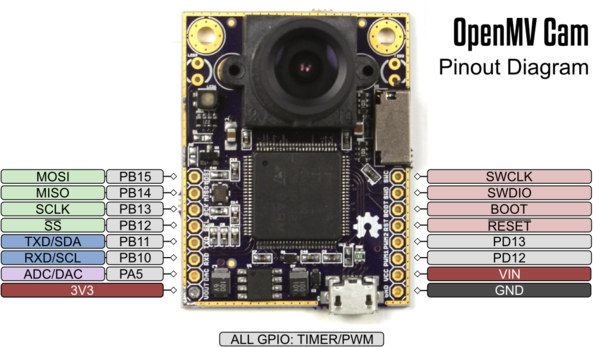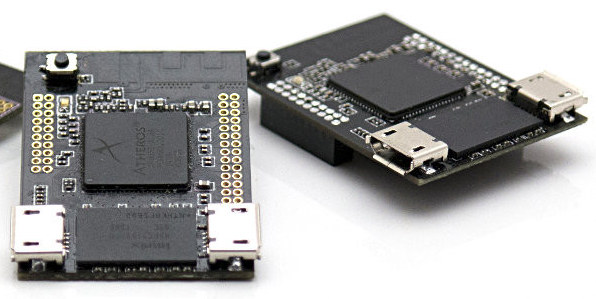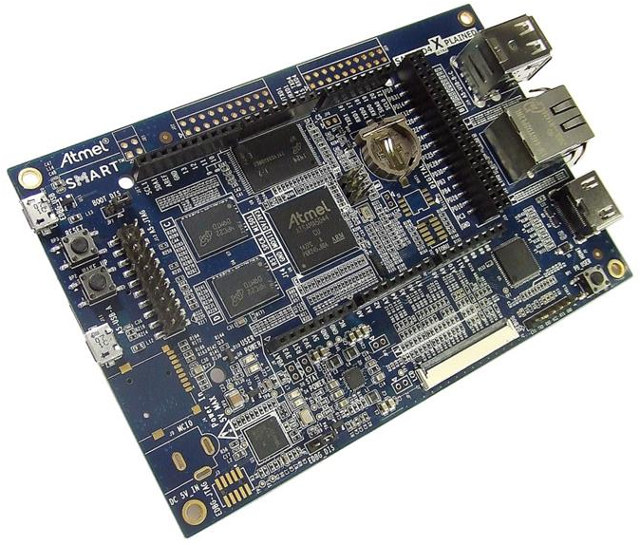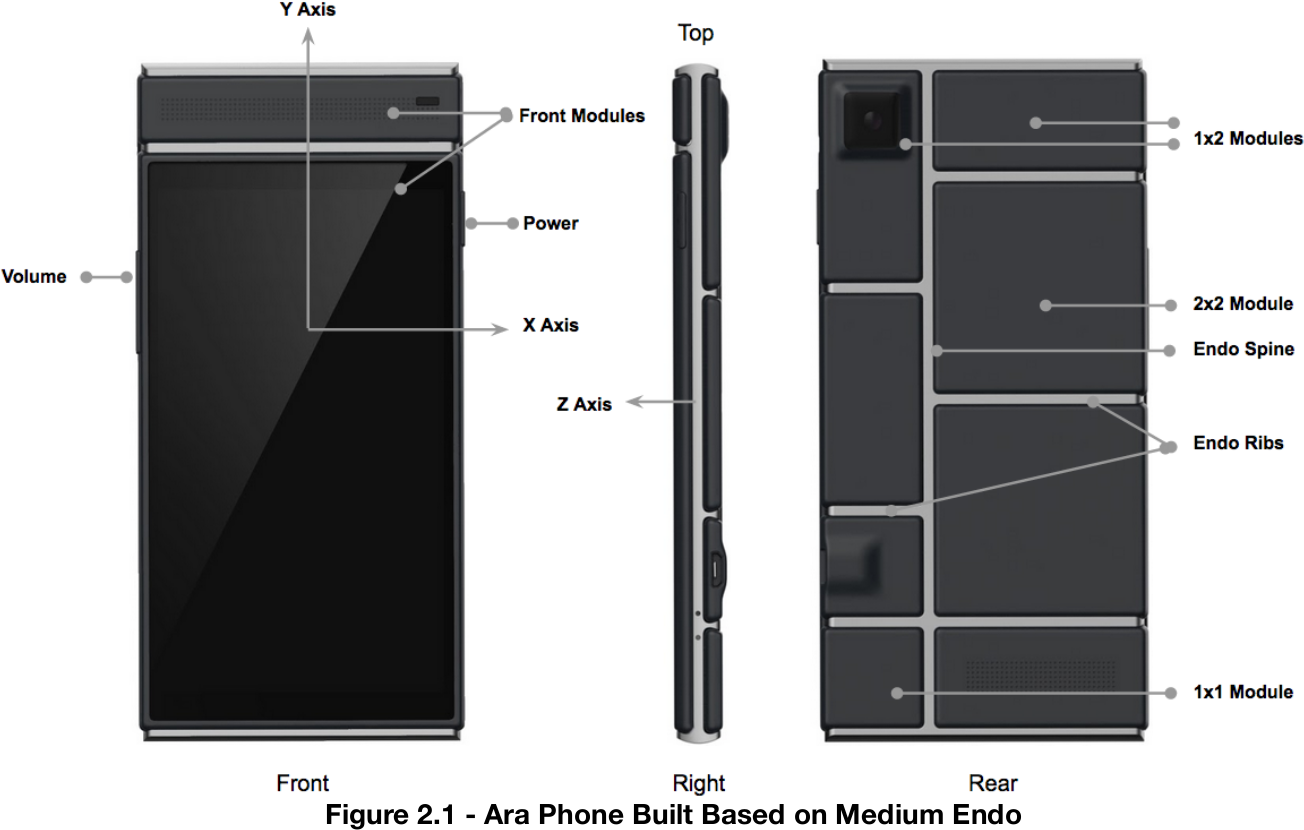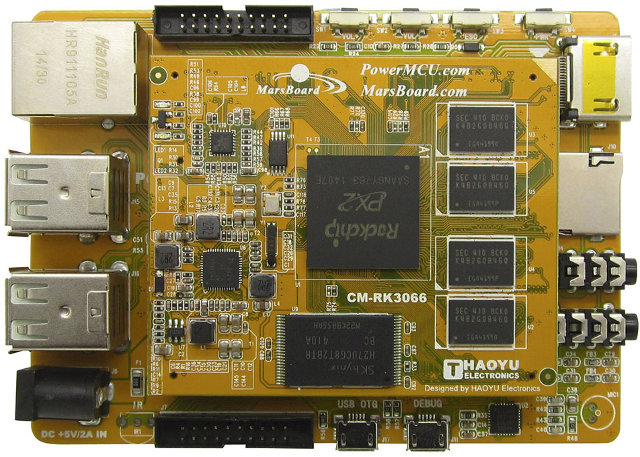Embedded Linux Conference 2015 will take place in San Jose, California, on March 23 – 25, 2015, and will focus on Drones, Things and Automobiles. The schedule has been published, and whether you’ll attend or not, it’s always interested to have a look at what will be talked about to have a peak into the future of Embedded Linux, or simply keep abreast with the progress in the field. So as usual, I’ve gone through the schedule, and made my own virtual program with talks that I find interesting. Monday 23rd 9:00 – 9:30 – Driving standards and Open Source to Grow the Internet of Things by Mark Skarpness, Director of Systems Engineering at Intel Billions of devices are beginning to come online, and many of these devices, large and small, are running open source software. To fuel this innovation, it’s more important than ever for these devices to use […]
OpenMV is an Open Source Hardware VGA Camera Controllable with Python Scripts (Crowdfunding)
Recently I’ve seen some activity about tiny cameras for makers, including Linux based SinoVoIP BPI-D1 recording up to 720p30 videos, and an upcoming mini camera for VoCore Wi-Fi module. There’s now another project called OpenMV, and open source camera for machine vision applications based on STMicro STM32, recording up to VGA resolution at 20 fps, and controlled using Micro Python scripts. OpemMV camera specifications: MCU – STM32F427, 180MHz, 225 DMIPS, 256K SRAM, 2M Flash, DMA/FPU/DSP/DCMI/SDIO/2D Acceleration Camera – 2MP OV2640 sensor with interchangeable M12 lens, 2x IR LEDS Storage – uSD interface: SDIO (4-bit mode) Expansions – 2x headers with USART, SPI, I2C, PWM, ADC/DAC, GPIOs, PWM and power signals USB – micro USB 2.0 Full Speed port Power Supply – 5V via USB; Current draw is approximately 140mA, steady state Dimensions – 4.57 x 3.56 cm The camera can be controlled using (Micro) Python scripts. with the project’s OpenMV […]
FOSDEM 2015 Schedule – January 31 – February 1 2015
FOSDEM (Free and Open Source Software Developers’ European Meeting) takes place every year during the first week-end of February. This year the developer-oriented event expects to bring over 5000 geeks to share ideas and collaborate on open source projects. Contrary to most other events, it’s free to attend, and you don’t even need to register, just show up. FOSDEM 2015 will take place on January 31- February 1 in Brussels. There will be 551 sessions divided into 5 keynotes, 40 lightning talks, 6 certification exams, and with the bulk being developer rooms and main tracks, divided into 7 main tracks this year: Languages, Performance, Time, Typesetting, Hardware, Security and Miscellaneous. I’m not going to attend, but it’s still interested to see what will be talked about, and I’ve concocted my own little virtual program out of the main tracks and developers’ rooms. There’s a few minutes overlap between some talks […]
Black Swift is a Tiny OpenWRT Wi-Fi Board Powered by Atheros AR9331 (Crowdfunding)
In case you thought there were not enough Wi-Fi board in the market already, here’s another one with Black Swift. The board runs OpenWRT, is a little larger than Vocore, and quite smaller than WRTnode, is powered by Atheros AR9331, provides access to I/Os via headers, and comes with two micro USB ports which should make it easy to use, and allow some interesting applications with USB devices. Black Swift specifications: SoC – Qualcomm Atheros AR9331 32-bit MIPS 24K CPU core @ 400 MHz, or 200 MHz in energy-saving mode selectable by software System Memory – 64 MB DDR2 SDRAM Storage – 16 MB NOR flash Connectivity – 802.11 b/g/n Wi-Fi (1×1, up to 150 Mbps) with PCB antenna USB – 1 x microUSB for power, 1x microUSB 2.0 port Expansion – Headers for 26x GPIO, 2x Fast Ethernet, SPI, I²C, 1x 16550 UART, 1x USB 2.0 Misc – Factory reset […]
Linaro Connect Hong Kong 2015 Schedule and Demos
Linaro Connect Hong Kong 2015 will take place on February 9 – 13,2015 in Hong Kong, and the organization has released the schedule for the five days events with keynotes, sessions, and demos. Each day will start with the keynote including speakers such as: George Grey, Linaro CEO, who will welcome attendees to Linaro Connect, and provide an update on the latest Linaro developments Jon Masters, Chief ARM Architect, Redhat, who will present Red Hat update and latest ARMv8-A demonstrations Dejan Milojicic, Senior Researcher & Manager, HP Labs Bob Monkman, Enterprise Segment Marketing Manager, ARM, will discuss about the impact of ARM in next generation cloud and communication network infrastructure Greg Kroah-Hartman, Linux Foundation Fellow, will introduce the Greybus Project (Linux for Project Ara modular phones) Warren Rehman, Android Partner Engineering Manager, Google The agenda also features sessions covering Android, ARMv8-A, Automation & Validation, Digital Home, Enterprise Servers, LAVA, Linux […]
Atmel SAMA5D4 Xplained Ultra Development Board Adds HDMI, 720p Video Decoding
Atmel has introduced an upgrade to their Atmel SAMA5D3 Xplained development board with SAMA5D4 Xplained Ultra replacing SAMA5D36 by SAMA5D44 embedded micro-processor for 720p hardware video decoding support, and adding HDMI output, extra storage and memory, etc… but losing one Ethernet port. Atmel SAMA5D4 Xplained Ultra (XLUT) specifications: MPU – Atmel SAMA5D44 Cortex-A5 Microprocessor @ 536 MHz System Memory – 2x 2Gbit DDR2 memory Storage – 4 Gbit NAND Flash, 1x 4-bit SD card connector (not populated), 1x 4-bit micro SD connector, optional serial EEPROM (SPI), one EEPROM with MAC address and serial number. Connectivity – 1x Ethernet 10/100M Display – 1x LCD interface connector, 1x HDMI port USB – 1x micro USB device connector, 2x USB host connectors Debugging – 1x 20-pin J-TAG connector, 1x EDBG connector (not populated), 1x serial DBGU interface (3.3V) Expansion – Arduino R3-compatible headers, XPRO set of connectors; ADC inputs and CAN interfaces Misc […]
Project Ara Modular Phone Update
The modular phone concept started with PhoneBloks, whose founders shortly got to work with Motorola Project Ara, and since Google bought parts of Motorola, the concept is now part a Google’s project. Project Ara Developers Conference 2015 has taken place yesterday in California, but if you’ve missed it, another one is planned in Singapore on January 21, and it will also be live-streamed. We’ve now got a bit more information, a neat video has been uploaded to YouTube showing how a battery, a (broken) display, speakers, and camera modules would slide into the phone, and a pilot project has started in Puerto Rico. Google has very recently shipped Spiral 2 developer hardware enable prototyping and development of modules for the Ara platform. The kit consists of: A board with the UniPro Switch in the Ara endoskeleton and multiple modules interfaces with UniPro Bridge ASICs (Tosbiba T6WM8XBG-0001) supporting multiple bridged and tunneled protocols; An […]
$60 MarsBoard Rockchip PX2 Development Board Runs Ubuntu, Debian, openSUSE, or Android 4.4
Haoyu Electronics has made a new board similar to their MarsBoard RK3066, but instead of using a CPU module with Rockchip RK3066, they’ve used the industrial version of the chip called Rockchip PX2 dual core Cortex A9 processor. The board is also comprised of a baseboard and CPU module (CM-PX2), and based on the name of the pictures it’s using the exact same PCB: CM-RK3066 SoM, and SOM-RK3066 baseboard, but they simply replaced RK3066 by PX2, and increased the NAND flash capacity to 8GB. CM-PX2 Computer-on-Module: SoC – Rockchip PX2 dual core ARM Cortex A9 @ 1.4 GHz + Mali-400MP4 GPU System Memory – 1GB DDR3 Storage – 8 GB NAND Power Management Unit – TPS659102 Misc – TX indicator LED use for debug, Power Indicator LED 10/100M Ethernet PHY – LAN8720A Connectors – 2x 100- pin for baseboard connection, 40-pin connector (unsoldered) Dimensions – 70 x 58 mm SOM-RK3066 […]



